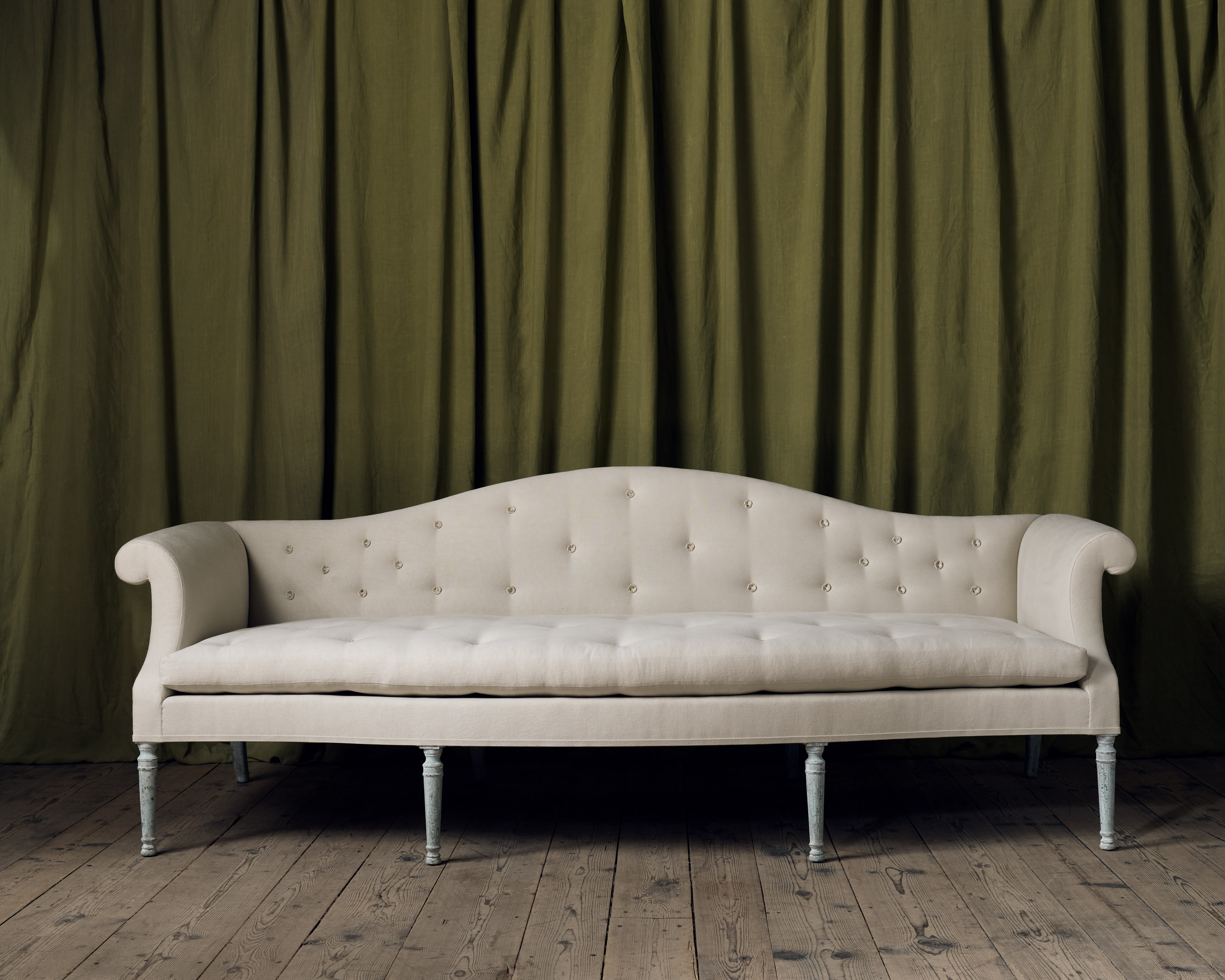After a two year hiatus, we felt the time had come again to restart our blog. It seems extraordinary that we haven’t written when so much has happened. The last blog we wrote was in lockdown and then we returned to a pace that we didn’t think was possible - full speed ahead and were purely focused on making new collections - where we wrote about them in the Second Journal Publication,published in 2022.
New Year, New Beginnings
3 February 2023

Jamb Journal Volume II

Featured in the third Journal, our Large Lattice Globe Lantern
And the 3rd Jamb Journal which is about to go to print, which shall be unveiled shortly.
In this blog post, our attention is drawn to four new reproduction designs that join our furniture collection

The Crawford reproduction sofa as seen in our Camberwell Home
The Crawford reproduction sofa, like all of our reproductions is faithfully reproduced from an antique original that was brought into the antique collection of our business, Hawker Antiques. As I have said before, ‘Strip away the trappings and the froth, and if the bare bones of a piece are promising, you know it holds the potential to become something quite magnificent.’ This underpins all of Jamb’s collection of antique and reproduction furniture.
The antique original was one of a pair of 19th century sofas, formerly in the collection of The Earl of Crawford at Haigh Hall, built by James Lindsay, 1830–1849
Our Crawford reproduction sofa, the 8th new addition to our sofa collection, is available with or without a gently fitting and box pleated loose cover. Beneath the loose cover, is a tightly upholstered frame with high square arms and back, on robustly turned mahogany legs and brass casters.

The Hardwicke Sofa joins the reproduction seating collection
Another sofa joins the fleet of exquisite settees, that we have named the Hardwicke. Once again this was inspired from an antique I bought whose design was too good to remain solely as one. The Hardwicke is reproduced faithfully from an original extremely elegant George III country house sofa, with it’s gently shaped camel back, serpentine front rail and deep seat. It was important to me to replicate as closely as possible, the original 18th century paint surface and the chalky blue painted legs encapsulate perfectly the sensitively aged patina. I love the juxtaposition of this, with the tight, buttoned upholstery in the Hepplewhite style, which evokes the faded grandeur of the great drawing rooms of the 18th century English estate.

The Cedric, a reproduction Howard & Sons armchair
The Cedric chair is as robust as it is deeply comfortable. It evokes the grandeur and ease of the 19th century English country house, echoing the Howard & Sons ‘Bridgewater’ design. Handcrafted, generous of seat with siege de duvet upholstery and squared mahogany legs on brass casters, it is synonymous with ultimate comfort.

The Hedden Console Table inspired from a table from Windsor Castle
And lastly, the Small Heddon Console table. This is modelled on an early 18th century giltwood and gesso pier or console table that was present in the apartments of King George IV at Windsor Castle.
The design is attributed to James Moore (c.1715) the 18th century cabinet maker who was appointed by George I and given the position of 'clerk of the works' at Blenheim Palace for the Duchess of Marlborough, after a dispute with John Vanbrugh. Moore was not only viewed as ‘the glass man’ sourcing pier glasses for the palace but was seen to have very ‘good working ethics and understanding in many trades.’
A design inspired from the master himself, the Heddon console table ( it’s smaller counterpart to the larger design) is illustrated here with a slab Derbyshire Fossil marble top with extensive fossil markings, mined from the Chatsworth Estate, with generous and thinly cut overhang typical of early period tables.

The original Queen Anne giltwood console table, taken from ‘For the King’s Pleasure' (Hugh Roberts, 2001, p. 264)
The original table appears in ‘For the King’s Pleasure' (Hugh Roberts, 2001, p. 264), and this lustreful yet sober finish to the giltwood surface aims to emulate the untouched gilded surface of the 18th century original.



